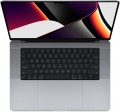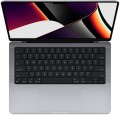Screen size
Diagonal size of laptop display.
The larger the screen, the more convenient the laptop for watching high-definition movies, modern games, working with large-format graphic materials, etc. Large screens are especially important for multimedia and gaming models. On the other hand, the diagonal of the display directly affects the size and cost of the entire device. So if portability is key, it makes sense to pay attention to relatively small solutions; especially since most modern laptops have video outputs like HDMI or DisplayPort and allow connection of large-format external monitors.
In light of all this, the actual maximum for laptops these days is
17"(17.3"); however
larger devices (18") reappeared at the beginning of 2023. The standard option for general purpose laptops is
15"(15.6"), less often
16", a diagonal of
13"(13.3") or
14" is considered small by the standards of such And smaller screens can be found mainly in specific compact varieties of laptops — ultrabooks, 2 in 1, transformers, netbooks; among such devices there are solutions for
12 ",
11" and even
10" or less.
Screen resolution
The resolution of the screen installed in the laptop — that is, the size of the screen in pixels horizontally and vertically.
Higher resolution, on the one hand, gives a sharper, more detailed image; on the other hand, it increases the cost of the laptop. The latter is connected not only with the cost of the displays themselves, but also with the fact that in order to work effectively at high resolutions, you need the appropriate filling (primarily a graphics card). This is especially true in games; so if you are looking for a laptop with a high-resolution screen that can effectively "run" modern games — you should pay attention not only to the characteristics of the display, but also to other data (the type and parameters of the graphics card, test results, the ability to work with certain games — see everything below). On the other hand, if the device is planned to be used for simple tasks such as working with documents, surfing the Internet and watching videos, you can not pay much attention to the “hardware” parameters: anyway, they are selected so that the laptop is guaranteed to be able to cope with such tasks on full resolution of the "native" screen.
As for specific numbers, the resolution options that are relevant today can be divided into 4 groups:
HD (720),
Full HD (1080),
Quad HD and
UltraHD 4K. Here is a mor
...e detailed description of them:
— HD (720). This category includes all displays that have a vertical size of less than 1080 pixels. The most popular HD resolution in modern laptops is 1366x768; in devices larger than 15.6 ", 1600x900 is also often found. Other values quite exotic and are rarely used. In general, screens of this standard are now typical mainly for entry-level laptops.
— Full HD (1080). Initially, the Full HD standard provides a frame size of 1920x1080, and it is this resolution that is most often used in laptop screens from this category. However, in addition to this, other resolution options are also included in this format, where the vertical size is at least 1080 pixels, but does not reach 1440 pixels. Examples include 1920x1200 and 2560x1080. In general, Full HD displays provide a good balance between cost, image quality and laptop hardware requirements. Because of this, nowadays they are extremely widespread; matrices of this standard can be found even in low-cost devices, although they are mainly used in more advanced technology.
— Quad HD. A transitional option between the popular Full HD 1080 (see above) and the high-end and expensive UltraHD 4K. The vertical size of such screens starts from 1440 pixels and can reach 2000 pixels. Note that QuadHD resolutions are especially popular in Apple laptops; most often, such devices have 2560x1600 screens, although there are other options.
— Ultra HD 4K. The most advanced standard used in modern laptops. The vertical size of such screens is at least 2160 dots (up to 2400 in some configurations); the classic resolution of a modern UltraHD matrix is 3840x2160, but there are other values. Anyway, a 4K display allows for high image quality, however, it costs accordingly — including due to the corresponding requirements for a graphics adapter; in addition, to work with high resolutions, it can be more convenient to connect an external monitor to the laptop. Thus, such screens are used relatively rarely, and mainly among premium laptops.Battery capacity
The capacity of the complete laptop battery in watt-hours.
Higher capacity allows the laptop to work longer on a charge, all other things being equal. However, keep in mind that the actual battery life will depend not only on the characteristics of the battery, but also on the power consumption of the laptop itself — and it is determined by both hardware characteristics and installed software. Therefore, only models with similar characteristics can be compared with each other according to this indicator. And if you need a
“long-playing” laptop, you should choose it not by battery capacity, but by directly stated operating time.
As for watt hours, this is a less popular unit of capacity than milliamp hours, but more physically correct: it accurately describes the amount of energy stored by a battery. Thanks to this, in terms of capacity in Wh, it is possible to compare batteries with different nominal voltages (whereas this is not allowed for mAh — additional calculations must be carried out using special formulas). At the same time, Wh can be easily converted to mAh if the battery voltage is known: for this, the capacity in Wh must be divided by the voltage and multiplied by 1000.
Operating time
Maximum laptop operating time on a single battery charge, without recharging. In this case, usually, the operating time in the maximum energy saving mode is implied: disabled wireless modules, minimum screen brightness, a small load on the processor, etc. Accordingly, the time of actual work on a charge is usually noticeably less than this indicator. Nevertheless, it can be used both for a general assessment of the battery life of a laptop, and for comparing it with other models. And choose work laptop (
from 7 operation hours) or
with more powerful battery (from 11 operation hours).
Weight
The total weight of the laptop — the device itself, without additional accessories (wires and power supply, mice, bags, etc.). For 2 in 1 models (see "Type"), the weight is indicated when assembled, with a keyboard connected.
Nowadays, models weighing
less than 1 kg are found even among fairly large devices — 14 – 15 ", not to mention smaller solutions. Laptops weighing
1 – 1.4 kg are also considered very light,
1.4 – 1.7 kg — light, weight
from 1.7 to 2.1 kg(more precisely, even up to 2.5 kg) can be called average,
up to 3.5 kg — more than average, and a mass of
more than 3.5 kg means that this is an advanced gaming or multimedia laptop designed primarily for power, not portability.
It is also worth remembering that when assessing the weight, the diagonal (size) of the device must also be taken into account. For example, 1.7 kg for a 13" laptop is a lot, and a 17" model can be considered very light if its weight does not reach 2.1 kg.

